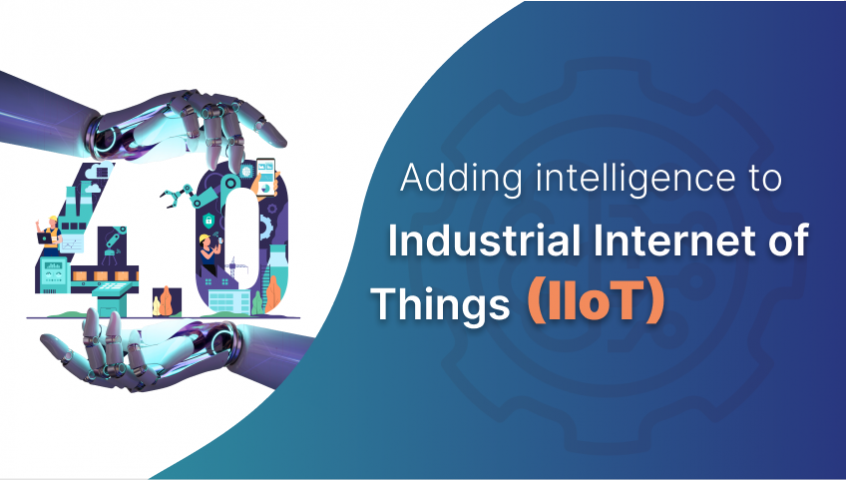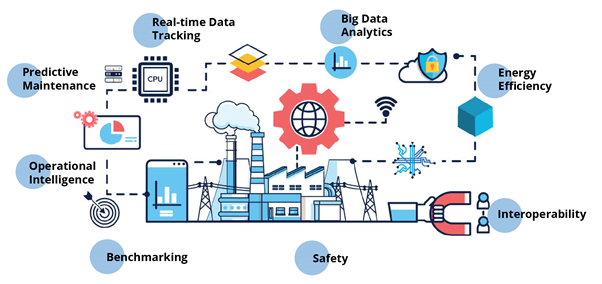
Every engineering industry including Manufacturing are moving towards Agility to stay sustained and quickly respond to customer needs and market changes while still having control over budgets and quality. The idea of capitalizing on machines to substitute the human efforts dates back to mid-1700s, which drove the first industrial riot. Fast forwarding all the later developments, now the software is accelerating what we call the 4IR. Though many manufacturers have been financing the capital expenditures of AI-related applications, various studies indicate the mainstream industries that work with large assets and multiple machinery are failing to make the most of Artificial Intelligence. In this article, we would like to shed some light on the current and future capabilities of this promising arena.
Of course, Robotics!
The software is made to multi-task in digital-era and the machines that are infused with this software are being designed to do what humans do – longer and better. That is precisely Robotics! Context-aware robots are positioned in the places of humans to support labor-intense functions and improve throughput. These customized-to-the function bots can aid 24/7 production with superior levels of quality assurance and safer work environment while condensing operating costs. The research groups say the elevated human-robot interaction is most likely to grow to a co-work level in near future.
Data collection redefined
The other side of the AI can mint the moolah that can reap long-term rewards for the businesses, Data! Gone are the days for supervisors to manually monitor a multitude of machines and control-room operators to check their performance signals on numerous screens and adjust settings as needed. Many plants that deal with medium to heavy machinery now have Industrial Internet of Things (IIoT) in place to monitor the whole production floor from one place. With sensors placed across the layers (Device, Network, Service and Content Layers) creates a connectivity and allows data collection, exchange, and analysis.
For example, a Vibration sensor placed on a machine with rotating parts can detect any unusual pattern in the vibration and sense damaged bearings that may cause stasis in the production. These vibration fluctuations could be so minute that even an experienced technician might not notice but a sensor can’t miss the waves. So, having a warning indicator on the machine or attaching a transmitter to send notifications to an application is simple today.
There are a wide range of sensors such as pressure, proximity, humidity, infrared, gas, image, etc., that can be coupled with data transmitters to enable performance monitoring and predictive maintenance. Many Industrial Asset and Facility Management systems allow the maintenance crews to inject precautionary data of each machinery as mentioned in their operating manuals given by the OEMs (Original Equipment Manufacturers) into the monitoring applications and set threat notifications at their thresholds. At the same time, the sensors acquiring the performance patterns of a machine throughout its lifetime is a lot of data. Data that can make impending business decisions more informed.
Data is just the beginning
Though collecting and processing the machinery data is a biggest advantage of IIoT, creating simulations to understand how ready the current system for any possible increase in demand, speed and volatility is incredibly easy and most importantly economic. Interoperability among machines can be improved with Artificial Intelligence.

With a practical understanding of IoT architectures and ability to seamlessly integrate Data collection and Analysis practices, Qentelli has been building sophisticated Big data systems for many businesses and turning them into a digitally advanced enterprise.
For the businesses that are into manufacturing, machine downtime costs more than just production delays. It takes more than human intuition to identify potential downtimes. If adequate instrumentation of IoT sensors and reliable connectivity are in place, it is possible to establish real-time data ingestion and creating data pipelines. This is how we mature the process of failure forecasting.

What’s more in store?
The Distributed Control System (DCS) can be reconditioned with Digital advancements like Automation and Artificial Intelligence. Having a Digital Twin of the plant that transmits real-time performance data can come handy for day to day operations and decisions. Transparency in information that flows from operators all the way up to the decision makers can be established. With Data as the main pillar of decision-making, relying on intuitions and judgements can be minimized. International Data Corporation (IDC) predicts that IIoT is projected to experience a compound annual growth rate of 29% over next 7 years.
Lights-out manufacturing is right around the corner and some of the tech giants already have a few manufacturing and assembly units following this methodology. IBM’s keyboard assembly plant in Texas is a fully automated no-labor factory. Building unified web-based SCADA control systems with communication infrastructure and alarming triggers can aid true mobility of process control.
Foreseeing expensive downtimes, introducing Reinforcement Learning for interoperability, enabling 24/7 production, producing actionable data for informed decision making is possible when IoT powered by AI is in action. If you are wondering how to start the journey, our subject experts would be happy to help you. Write us: info@qentelli.com

